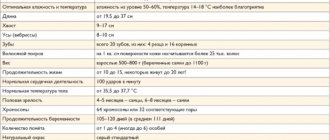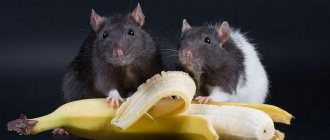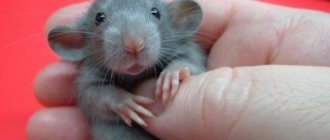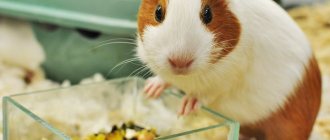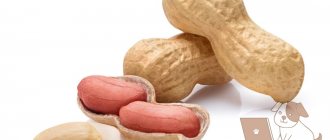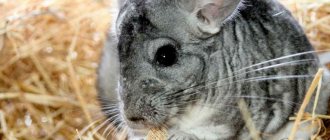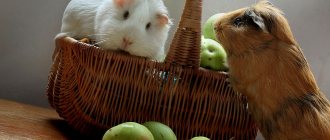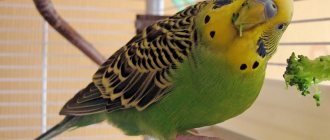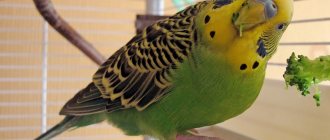Is it possible to give banana to rats?
For good growth and development of the body of rodents, they should be given a variety of fruits and vegetables, which contain many useful vitamins.
Bananas are allowed for decorative rats!
The main thing is to follow the dose and not over-feed the animal, as the fruit causes obesity in rats, which can ultimately shorten life expectancy.
Bananas should be given to your pet ripe or dried.
Are yogurt and sour cream good for rodents?
Yogurt is considered an ideal alternative to kefir; it also contains a whole range of important substances and microflora useful for digestion. In addition, yogurt has a much richer aroma, so its taste is especially acceptable to most pets. At the same time, you must remember that it is not recommended to give foods with various fruit fillings to rats. In most cases, they contain harmful dyes, flavors and flavor enhancers.
Did you know? Rats have been used as pets since about the middle of the 19th century. It was during this period that the legendary London rat catcher Jack Black first carried out decorative selection of rodents, bred breeds that are still popular to this day with white, gray and black colors, as well as fawn shades.
Regarding sour cream, it is strongly not recommended to give such a milk derivative to decorative rodents. The product practically does not contain any vitamins and other substances in sufficient quantities, so it is considered useless for health. With all this, sour cream (and cream) is characterized by high fat content, and such food often leads to various diseases and liver damage in rats.
What can you feed decorative rats?
- Buckwheat. This low-calorie product is suitable even for decorative rats suffering from diabetes.
- Millet (millet) is an excellent component of feeding decorative rats.
- Barley (pearl barley).
- Rye.
- Rice.
- Basil.
- Zucchini (in any form).
- Cilantro.
- Carrots (in any form). However, keep in mind that in large quantities this product can cause digestive upset in a decorative rat.
- Cucumbers.
- Parsley leaves.
- Salad: field lettuce (corn), iceberg, arugula, Chinese cabbage, lettuce, spinach.
- Celery is also beneficial for pet rats.
- Pumpkin (any form).
- Dill is another product that can be fed to your kitten rat.
- Zucchini (any form).
- Watermelon (however, keep in mind that early watermelon may contain nitrates). You can also feed your kitty rat seeds.
- Avocado.
- Apricots.
- A pineapple.
- Hawthorn (but it reduces blood pressure).
- Cherry.
- Grape.
- Melons (however, early melons can be “rich” in nitrates).
- Strawberry wild-strawberry.
- Cranberry.
- Mango.
- Raspberries.
- Peaches.
- Rowan (red).
- Currant.
- Persimmon (but only sweet and ripe).
- Blueberry.
- Rosehip (dried).
- Apples (including seeds).
- Varenets.
- Yogurt (preferably natural, without dyes, sugar and other additives).
- Kefir.
- Ryazhenka.
- Cottage cheese.
- Gamarus.
- Zofobas.
- Bones (boiled).
- Seafood (boiled).
- Meat, including poultry (boiled). You cannot feed a decorative rat pork!
- Meat by-products (boiled).
- Fish (boiled).
- Dry food, dog and cat (but only very good quality!)
- Eggs (quail or chicken, boiled). The yolk is soaked, otherwise the rat may choke.
The rats were fed chips and almost killed them
We endlessly carry out dubious experiments on ourselves: we live as we please, we eat whatever we have.
And recently, Kharkov scientists found out what the consequences of consuming fast food—“dry food” for homo sapiens—can be. The results are impressive. Dry food is a real poison Let us remind you that “fast food” (fast food) includes almost everything that can be swallowed on the go. Unfortunately, this is where the advantages of fast food probably end. Crackers, chips, hamburgers, cheeseburgers, sandwiches are products that have been subjected to deep technological processing, additional purification, sweetened, flavored, softened, added preservatives, and other insidious flavoring additives.
“We wanted to determine the extent to which modern products, which we classify as “fast food,” affect the functional characteristics of the body. After all, it is they who ultimately determine resistance to disease, protection from various environmental factors, resistance to extreme influences, impact on quality and life expectancy,” says the director of the Institute of Biology of Kharkov National University. V.N. Karazin Anatoly Bozhkov.
To find out how fast food affects the body, scientists at the Institute of Biology conducted a series of interesting experiments. Laboratory rats have been in human skin: they were fed for three months with what the food industry feeds us. For research, we took one-month-old rat pups. The first group of animals were kept on the most restrictive diet: they were fed only crackers and chips. It is curious that intelligent animals categorically refused human food: they ate the bare minimum - just enough so as not to die.
“If the pups had lost another five or six grams of weight, they would have died from exhaustion,” Anatoly Bozhkov is sure.
However, the rats did the right thing in choosing to go on a hunger strike over such food. Because after three months of the “sugar-chips” diet, they were significantly behind in growth compared to their relatives who received cereals, sprouted grains, bread, and vegetables. In “fast food” rat pups, serious changes were observed in the functioning of the liver and the apparatus that synthesizes protein, in the immune and other systems.
Changes in the ratio of proteins will certainly affect the maintenance of homeostasis itself - constancy within the body, which ensures survival in any conditions, scientists say.
Hamburgers are no better
The second group of rats was not treated as harshly as the first: they were treated to another fast food, which contains more carbohydrates and water components - hamburgers and other sandwiches. Animals on such a diet were also stunted in growth compared to normal rats, although to a lesser extent. But even more profound changes were observed in carbohydrate metabolism in the “sandwich” group of rats compared to the “crackers-chips” group.
Anatoly Bozhkov emphasizes another very important point: after such diets, very profound changes in body functions occur in the body. When the animals were later switched to their usual food, their bodies never fully recovered. At least a month later, scientists did not notice any improvement in their condition. Researchers explain this phenomenon by the memory of foods at the metabolic level, which remains for a long time.
“This does not affect adult animals as much as it does young ones, because they have already developed an addiction to other products. But this is especially true for a young, growing organism,” warns the director of the Institute of Biology.
Guaranteed path to obesity
Director of the Institute of Biology Anatoly Bozhkov warns that he is not going to indiscriminately transfer the results of the experiment to how the human body reacts. Nevertheless, the general conclusions that scientists have made are worthy of attention.
Why was the experiment conducted on animals and not on people who have been chewing sandwiches and chips for a long time?
“The fact is that very often food products do not undergo special studies,” explains Anatoly Bozhkov.
Therefore, conducting experiments with fast food on people can be very fraught. You can only observe those who consume these products without interfering in the situation. However, there were volunteers for such experiments, says Anatoly Bozhkov. Two adult Americans voluntarily ate only fast food for a long time. The experiment ended sadly: the “experimental subjects” acquired every possible disease they could get. Including obesity. By the way, in the course of experiments conducted by scientists from the Institute of Biology, it turned out that if we dilute our regular food with fast food, we will certainly gain weight, and very much so. At least, the most impressive number of obese people is observed in the USA, the “capital” of fast food.
Tomatoes
Can rats eat tomatoes? The answer to this question is also positive. But these vegetables should only be given when ripe and in small quantities, since they contain acids. Unripe fruits contain solanine, just like leaves and tops, so they should not be fed. Pickled and canned tomatoes are also contraindicated for pets. If you do not grow your own vegetables, then tomatoes can only be given to rats during the season.
Pepper
Bell pepper contains many vitamins. Therefore, rats can have pepper, but only once a day, if your pet is not prone to increased gas production.
Eggplant
Inexperienced breeders are often interested in whether rats can eat eggplants. Before feeding this vegetable to your pet, it is necessary to wash it well, peel it and heat it. Leaves and tops should not be fed to a rodent because of the solanine they contain.
Cabbage
But can rats eat cabbage? Red, white, and Brussels sprouts should not be given to pets, since this vegetable increases gas formation in rats. Broccoli and cauliflower can be eaten in small quantities and only for individuals who are not prone to increased gas formation.
Carrot
Rats can eat carrots raw. Just do not overfeed your pet with this vegetable to prevent intestinal upset. Also, overeating carrots can cause allergies and hypervitaminosis, which in turn leads to eye problems.
Zucchini
Can rats eat zucchini? Zucchini and zucchini can be given raw, boiled or steamed.
Potato
Can rats have potatoes and in what form can they be given to them? Raw potatoes should not be fed to your pet due to their high starch content. Offer your rodent a small piece of boiled potato, but no more than a couple of times a week. It is also prohibited to feed potato tops, sprouts and green tubers to rats, as they contain poisonous solanine. Do not give your pet chips, even as a treat.
Corn
Corn can be offered to rats raw or cooked, only in small quantities as a treat. Canned corn should not be fed to pets. You can also offer your pet popcorn as a treat, only if you made it yourself, without salt, sugar or spices.
Beet
Can a rat eat beets? It is possible, but not often and in small quantities, since this vegetable has a laxative effect. You can give beets raw or boiled.
Radish
Can rats have radishes? Radishes and turnips increase gas production, so they should not be fed to rats. Although there are messages on forums about feeding pets with these products. But we do not recommend doing this. Do not give your pet foods that may cause him discomfort.
Pumpkin
Pumpkin is a very healthy vegetable because it contains fiber, proteins, vitamins and other beneficial substances. Therefore, to the question: can rats eat pumpkin, there is one answer - yes, they can. Pumpkin is fed to rodents raw and boiled. You can also offer your pet pumpkin seeds, they are healthier than sunflower seeds. In addition, they are an excellent prophylaxis against helminths. But you also shouldn’t overdo it with them, since they are fatty. A rat can be given no more than 10 pieces. in Week.
Onion and garlic
Onions and garlic are very spicy for rats and your pet may refuse to eat them, but a rodent may like young green onions. Onions and garlic are most often offered as an antibiotic and antiviral agent for diseases, only in small quantities.
Peas
Peas increase gas formation, so it is not advisable to feed them to rats. You should also not feed your pets canned green peas. But you can occasionally offer your pet some fresh green peas, either from the pod or boiled.
Beans
Rats should not eat raw beans and other legumes, as they increase gas formation. But there is an opinion that sometimes legumes can be offered to rodents only after heat treatment.
Rats can diversify their diet with various vegetables, both raw, boiled and steamed. Boiled ones, in turn, can be offered to your pet in the form of small pieces or puree. But most importantly, try not to give vegetables that could harm your pet or cause discomfort. These vegetables can be very healthy with a huge amount of vitamins. But if they can make a rat feel bad, then why experiment on the animal and try to feed it with foods that are not recommended to be fed to these rodents.
Love your pets, follow the rules of care and feed them correctly. Now you know what vegetables a rat can eat, and which ones your pet should refrain from eating.
Did you like the article? Share with friends: [supsystic-social-sharing id=”1"]
- Related Posts
- Rat breeding
- How rats laugh and why they do it
- Pregnancy in rats
« Previous entry
Vegetables and greens
Among vegetables, foods that cause fermentation are prohibited: white and red cabbage, Savoy and Brussels sprouts, as well as cauliflower. Rats can eat broccoli in small quantities. Strong gas formation is caused by radishes, turnips and radishes, as well as all types of legumes: beans, peas, beans and lentils
.
You should be careful when giving sweet peppers; some animals have the same reaction to it. You can sometimes offer boiled green beans if they do not cause gas in your pet. Carrots, zucchini, zucchini and pumpkin are delicious and healthy foods. Cucumbers in excess will cause diarrhea
.
Eggplants are only good when cooked; solanine in raw vegetables can cause poisoning. Artichokes can also only be given cooked. Potatoes will not bring any benefit to the animal
. In its raw form it is contraindicated for animals, but when cooked it acts as ballast. However, some rodents enjoy eating potatoes.
Vegetables, fruits and herbs should be given daily in small quantities - 10-12 g.
Dill, cilantro, parsley, basil and celery are healthy foods for animals and can be given every day. They are not only safe, but also help digest protein foods. Onions, garlic and wild garlic are not suitable due to phytoncides that irritate the gastrointestinal mucosa.
They should be given occasionally and in limited quantities. Acidic vegetables such as tomatoes, rhubarb and sorrel can also eat away at the delicate walls of a rodent's stomach. You should not give animals spinach either. Beets carry another danger - a laxative effect, they should be given carefully. Leaf lettuces that do not have a specific bitterness are generally suitable for animals.
Grain and cereals
Grains are the main product in the diet of rats, but they are not equally important. Wheat is a rich, high-calorie product; it can be given to rats, but it must be taken into account that it must be supplemented with other components. The mixture may include oats, buckwheat, corn, rye, barley or pearl barley, rice, millet or millet. These grains are not equal. Buckwheat is a dietary low-calorie product, and corn, on the contrary. Oats should be added in small quantities; excess may cause fermentation. Refined rice is low in nutrition, so it's worth finding a wild rice blend or an unrefined version of the grain.
Semolina does not contain anything useful, so this product should be excluded from the diet. Barley or wheat cereals are suitable for porridges. Porridge is useful only for weakened, emaciated animals or young animals. Adult rats should only give them as a treat.
Fruits and berries
Citrus fruits are prohibited for consumption; they can cause an allergic reaction that can be fatal. The reason for this is increased acidity. In some cases, you can give a piece of ripe tangerine as a treat. It is not recommended to add grapes and pears to your pet's menu. They lead to digestive problems: increased gas formation or severe stomach upset. Apples and persimmons are a source of poisonous hydrocyanic acid and amygdalin glycoside.
Dried fruits are prohibited, because they cause fermentation in the intestines. Figs, cranberries, rowan berries, green bananas and pineapple should not be given. The rat should not eat plums due to the laxative effect. Chokeberry and bird chokeberry lead to constipation. Garden or forest berries are not produced depending on the acidity level. Melon and watermelon must be fed during the season, because... at this time the amount of nitrates decreases. Fruits and berries are not the main food of rodents. Their consumption on an empty stomach leads to digestive system disorders.
Feeding rats video
Other similar posts:
Sea kale is rich in iodine, just like human rats also need this element.
It is best to purchase dry seaweed at a pharmacy and add it to your main feed. A rodent may have problems with the thyroid gland if its diet lacks iodine. Additionally, you can use mineral stone with algae and seafood in your diet.
You can buy seaweed in the store. It is good to rinse off the brine in several waters and offer it to the animal. The rats definitely won't eat much. We remove the remains from the cage.
It is enough to give seaweed once a week. The dry one is pre-soaked in water and offered to the animal. Its taste is not the most delicious, so you can add it to cottage cheese, yogurt or baby food.
Remember, this is the same as vitamins for humans. It's not worth giving a lot. Dry seaweed is taken on the tip of a knife (1/6 tsp) and diluted in 1-2 drops of water.
If the animal does not want to eat, do not force it. Suggest at another time. Can be stored in the refrigerator.
Great article 4
Boiled eggs in rat diet
Here we come to our topic: eggs are an excellent source of protein. With the correct use of boiled eggs in the animal’s diet, there will be no problems, given that such a delicacy will definitely be to their taste and benefit, but it is important to remember the following:
- adult rats should not be fed more than once a week;
- your pet may choke on the yolk, so it should be diluted with water;
- an allergic reaction is not uncommon, so for the first time you do not need to give the rat much, and after feeding, make sure that no spots have appeared, and the animal is active and cheerful, as always;
- eggs are high in calories and can lead to obesity, so you should not abuse them;
- domestic rats should not be fed dishes with eggs from the table, as they may contain oil, salt or spices;
- Rodents cannot eat fried foods, so treating your animal to scrambled eggs is not a good idea.
Raw eggs: is there a danger?
Thanks to wild rats (and their raids on chicken coops), there's a stereotype that raw chicken eggs are safe for pets, but the truth is that pets don't need extra protein because they already get it from their food. In addition, they may contain worms and other parasites, which can linger in your animal’s body for a long time and lead to dire consequences.
From the point of view of parasites, quail eggs are safe, since the temperature of quails is about 40 degrees and salmonellosis cannot develop. They can be given no more than once every two weeks with a serving of no more than a teaspoon.
Fermented milk products for stable digestion
Fermented milk products can harm your tailed friend only if the pet has individual lactose intolerance. It is rare, but still, when you try to give milk for the first time, you should not overuse it, as the consequences may include intestinal upset, severe diarrhea, etc. If an allergy is detected, your pet can be treated to lactose-free foods.
What can you give from dairy products?
If there is no allergy, foods without additives (dyes, berries, etc.) with a small percentage of fat content (but not low-fat) should be given.
Therefore, without flavoring additives, your pet can be treated to natural yogurt, kefir, fermented baked milk and cottage cheese, but in small quantities.
Due to the fat content and too high calorie content, you cannot: cheese, sour cream, cream, dried milk (regular milk - with caution)
Quality grapes - what are they?
Many owners are very mistaken in believing that a decorative rat should and can eat absolutely everything. Including products that are far from fresh. When choosing grapes, you need to focus on fresh bunches. Rotten berries will bring neither benefit nor pleasure to a rodent. When choosing grapes, pay attention to their appearance.
The best solution is to provide grapes grown in environmentally friendly conditions and without chemical treatment. Such berries can be collected at your summer cottage or bought from a small farmer at the market.
If wasps are constantly flying around a stand with grapes, this is an indication that it has not been treated with harmful chemicals. You can safely buy such berries. If you purchased them in a store, then before giving them to your pet, pour boiling water over them several times.
How to choose food for a rat
When choosing food, you should pay attention to the composition of the mixture. It is advisable that the mixture include:
- Several types of grains;
- Pieces of meat;
- Vegetable and fruit supplements.
This will eliminate the need to purchase additional vitamins. But various flavors and artificial flavoring additives are not welcome here.
The food packaging must be sealed without any signs of moisture. In cardboard packages, an additional sealed insert made of foil or polyethylene is desirable to protect the food from the penetration of insects.
Recommendations: 15 Best Puppy Foods
16 Best Dog Foods
18 best foods
What should pet rats not eat?
When feeding rodents at home, it is very important to know and select healthy foods.
Domestic rodents living in a cage are strictly prohibited from giving fried, baked, pickled, spicy, sweet and salty foods. You should not give hard and moldy cheeses, sausages of all types, homemade lard, raw beans, white cabbage and potatoes. Some pets also like to eat plants. Many housewives in their apartments have plants such as begonia, kalanchoe, geranium, cyclamen; they are poisonous and can cause irreparable harm to the body, so it is better to get rid of these species or move them to a secluded place.
What kind of insulation do rats and mice not eat?
The necessary material in a private home is insulation. Modern materials that retain thermal conductivity and reduce energy consumption become objects of eating by rodents. Let's look at examples of insulation materials that are not “appetizing” for these rodents.
Usually they choose foam plastic or mineral wool to furnish their warm nests. Other insulation materials, such as foam glass, expanded clay and liquid wall insulation, do not at all attract them as a culinary value. Foam glass consists of a dense structure made by foaming glass raw materials with a carbon mixture, resulting in the formation of glass cells. Expanded clay has a similar structure, this is enough to prevent rats and mice from getting interested in the delicacy of the insulation.
Source
Fruit seeds and seeds
One of the prohibited foods is fruit seeds. In particular, the seeds and kernels of citrus fruits contain the toxic substance amygdalin. When it breaks down, hydrocyanic acid is released. One bone contains enough poison to kill the animal. Do not feed your rat seeds and pits of plums, apples, peach, oranges, cherries, lemons and other fruits. Rapeseed and mustard seeds are prohibited for consumption. It is allowed to feed your pets watermelon, sunflower and pumpkin seeds. They are used as a supplement to main food. An overdose of seeds can cause serious poisoning.
What do rodents like?
Biologists and professional deratizers (pest extermination specialists) agree that mice are more often “led” to delicacies of plant origin, while rats love animal products. But when a rodent has been hungry for a long time, it will eat whatever it finds. That is why at first it is difficult to determine who is in the house. In view of what has been described, employees of non-food industry enterprises resort to a trick - they use poisoned grain to destroy parasites. It’s cheap and works 100%, because pests have no other food.
Mice
Based on the above, the best mouse baits are:
- fresh baked goods - a fragrant wheat bun, muffin, gingerbread or a piece of soft white bread will attract the pest almost instantly;
- seeds - in the wild, mice eat grains and willingly feast on them in our homes;
- nut – as appetizing as grains;
- a slice of apple, pear, plum or peach - familiar fruits with a bright smell often become food for mice in the wild;
- peanut butter - nut paste has a pronounced aroma and smells fragrant for many meters.
Rats
Rats are practically omnivorous. They can be caught using any delicacy, but we recommend:
- lard is a product with a bright, spicy aroma that attracts rodents like a magnet;
- sausage - only high-quality sausage products will do; rats often refuse cheap ones, stuffed with chemicals;
- fresh meat - the specific smell that various parts of a chicken or pig carcass emit attracts pests;
- minced meat is an almost ideal bait for rats, better with the addition of onions;
- smoked fish is a very flavorful option that can catch the maximum number of rodents;
- vegetable oil – “fragrant” unrefined sunflower oil can be used in combination with a piece of bread.
Wrong mixtures
Some people give their rats hamster food, but this is not the best option. The fact is that it contains too many sunflower seeds and peanuts, which cause health problems.
There are many alternative foods, particularly hazelnuts. This is a good source of protein and a great way for your rat to exercise his jaws.
The rat is entirely dependent on you for food. By providing her with proper nutrition, you will get a healthy pet.
Special food for rats will give your pet all the substances it needs.
However, he won’t refuse a small treat either.
The most effective traps
Several of the most effective methods are used to control pests. These are poisonous baits, ultrasonic repellers, mousetraps that kill or catch animals alive, and sticky traps.
Each method has its own characteristics, advantages and disadvantages. To choose the appropriate option, you should consider them in more detail.
Poison traps
Placed in places closest to nests or movement routes of animals. Often made from seeds or grains. Rodenticides can be purchased at pharmacies.
The drugs are made on the basis of substances that block blood clotting. As a result, rodents die from internal bleeding. Such baits should not be used in areas where pets live.
Ultrasonic repellers
This method is considered the most humane and safe for both animals and humans. Such devices produce sounds at a certain frequency.
For humans they are imperceptible, but for rats they are simply unbearable . Some models, in addition to ultrasound, are capable of emitting special sound signals and scaring away beepers using light flashes.
The combination of several effects completely kills the desire of pests to be near such powerful stimuli. In the first few days of using repellers, an increase in the number of rats may be observed, but do not be alarmed, this is a normal reaction.
Ultrasound causes real panic in pasyuki, forcing them to be active during the daytime and chaotic movements around the house. In a couple of weeks the room will be completely cleared of parasites.
Another safe and humane way to control rodents is with essential oils. Animals simply cannot stand the smell of mint and try to stay away from it.
Rat traps
If there are a lot of pests, you can try to catch them with a rat trap. To do this, you need to use the best baits that were listed above.
When setting traps, it is important to ensure that there are no small children or pets nearby.
Compared to poisons, mousetraps have undeniable advantages . A poisoned rat can die anywhere in the house. The corpse under the floor will poison the air with an unpleasant odor for a long time.
Traps with bait for rats are located along the walls, in areas where rodents or traces of their presence have been noticed. Typically traps are placed perpendicular to the wall.
In addition to devices that kill animals, there are also so-called “live traps”. They confine the animal without injuring it. This allows you to release the rat into the wild, the main thing is to do it away from your home.
Sticky traps
Usually used for catching mice, since their weight is much less than that of a rat. The animal, running along its usual routes, ends up on a sticky surface from which it cannot get out.
If such a trap is glued to the body of a person or pet, it can be removed using vegetable oil.
The installed traps are checked every day. All manipulations must be carried out with rubber gloves.
Foods that should not be given to rats
If your pet's health is important to you, do not feed it from the table. It seems that there is nothing wrong with giving a rodent a piece of apple, chicken or cracker, but this is not so. The rat may refuse its food and instead receive a high proportion of fat and carbohydrates. It will be difficult to wean an animal accustomed to a common table, which means the end of a balanced diet.
It is strictly forbidden to give your rodent alcohol, fried, smoked, salted, pickled, fatty foods, carbonated drinks and sweets.
Animal proteins
Animals should be given animal protein two or even three times a week. The table can be served:
- boiled lean meat;
- boiled chicken or quail eggs";
- mealworm, zoophobus (zophobas), gammarus;
- seafood;
- high-quality dry food for dogs or cats.
From poultry, you can give chicken breast, but turkey, which is not fed with growth hormones, is better. From ungulates you can take beef, lean lamb, and game. It is better to grind the boiled yolk with water so that the mouse does not choke. Do not feed fatty pork and its derivatives to rats.
Before cooking, store-bought beef should be soaked for 2-3 hours, and chicken should be boiled in another water to remove harmful substances. Rats can suffer from allergies.
Supplements
Let special mineral stones for rodents be in the cage. If the animal needs them, he will use them. Here you can also remember about onions and garlic.
The normal feeding frequency is twice a day - for adults, three to four times for children and adolescents.
Photo on Foter.com
You cannot overfeed a rat.
If an animal does not want to eat any product, do not force it! Offer a replacement.
Introduce new foods for the animal into the diet a little at a time, watch the animal’s reaction, changes in its condition and behavior.
Each animal has its own individual characteristics.
